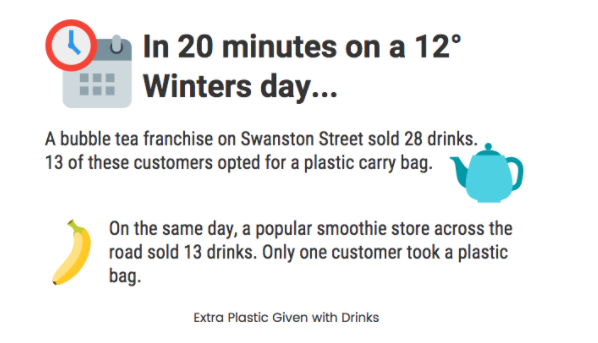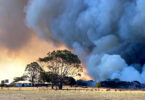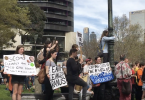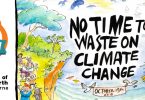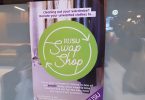The number of plastic cups disposed of after one use continues to climb in Melbourne’s CBD as bubble tea increases in popularity.
Founded in Taiwan in the 80s and finding success across China in the 90s, the tapioca drink has now made a home in Melbourne.
With several chains adorning Swanston Street, the bubble tea franchises are expanding the cultural diversity of the city’s beverage selections.
Yet unlike competitors, they do not offer a reusable cup option.
When served, customers have the option at most bubble tea stores to take a plastic carry bag that is designed to fit one drink.
The cups are sealed with the iconic plastic lid that is pierced with a straw by the customer before consuming, allowing drinkers the option to consume their beverage later on.
Yet by sealing the lids over, most customers do not remove the clear plastic cover and recycle the cup on its own.
Instead, the cup, its plastic lid, plastic bag, cardboard sleeve, plastic straw and plastic straw cover are disposed of immediately after use.
In this way, bubble tea franchises are producing an alarming amount of plastic with no attempt to reduce, reuse or recycle.
In order attain data, City Journal monitored a bubble tea store and a smoothie chain on the same block on Swanston street for 20 minutes.

Here, it becomes clear that not only was the bubble tea more popular, they also produced larger quantities of plastic.
Only two of the 13 customers that took a carry bag used the bag. The other 11 began drinking their beverage immediately, holding it in the plastic bag.
In this comparison against a cold beverage competitor, the bubble cup store came out on top. To get further data, City Journal monitored a popular coffee chain as well to compare bubble tea against a warm drink provider.

In this case, the bubble tea store showcased their advantage of being able to produce drinks at a much faster rate than a barrister.
Saul Maiava, an employee at a bubble tea chain in Melbourne’s CBD said “on a quiet day we use around 700 cups. Sunday’s are usually our busiest day though, and last Sunday we did over 1500 cups. And this is in winter as well, summer is way crazier.”

The plastic wrapping for cups at a bubble cup chain
“It’s really hard seeing how much plastic goes to waste,” he said. “The cups come in plastic bags which get chucked out, the ingredients are all wrapped in plastic, and it all just goes in the bin.”
There are currently no federal laws against plastic use, and although some states like Canberra and Tasmania have bans against single use plastic bags, there is no action being taken in Melbourne.
France set a world record with the first ‘plastic ban’ in September 2016. All plastic cups, plates and utensils will be removed from the market by 2020.
Only products made from biologically sourced materials are permitted on shelves, following their well-received ban on plastic shopping bags in July last year.
According to their most extensive report on plastic use to date, The World Economic Forum has found that there will be more plastic in the ocean than fish by 2050.

Source: World Economic Forum (http://bit.ly/2vwCd1W)
One-third of all plastic produced globally is leaked into the environment, causing the pollution of oceans and seas.
Whilst there are efforts to reduce daily plastic with inventions like Green Bags and Keep Cups, the report found that plastic use is still going up.
Global production of plastic is 20 times more than the amount produced 50 years ago. The WEF says this amount will double in the next 20 years.
Moreover, 95 percent of plastic is being thrown out after one use, as is the case with most takeaway coffee cups.

A rubbish bin at a coffee chain in Melbourne’s CBD
Some café branches like Street offer a discount when you bring your own cup.
Delia Thomas is a barrister at the Melbourne Central café, and she says it makes “a bit of a difference.”
“A couple people a day will bring their own cups. There are some customers who are always really good and do it every time, but I’d say it’s really not enough. Maybe thirty people a day, at most.”
“Coffee cups have a lining that makes them non-recyclable. Working here and seeing how many we use always makes you think that it should be illegal.”
Lines at a café often deter customers, but a line at a bubble tea store is a regular sight.
Vicky Huang, a bubble tea drinker, says getting bubble tea is routine for her and her boyfriend.
“Whenever we met up, we always just get bubble tea. It just tastes so good and they look so cute as well in the bags. I think everything about them is appealing.”
Instagram culture has seen to the bubble tea bags becoming an accessory to photos.

